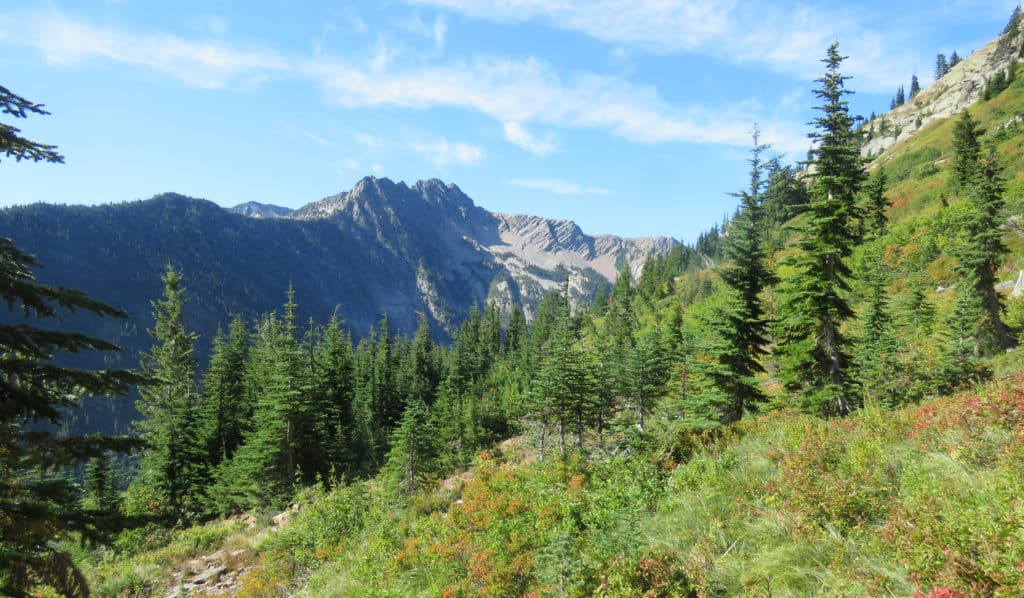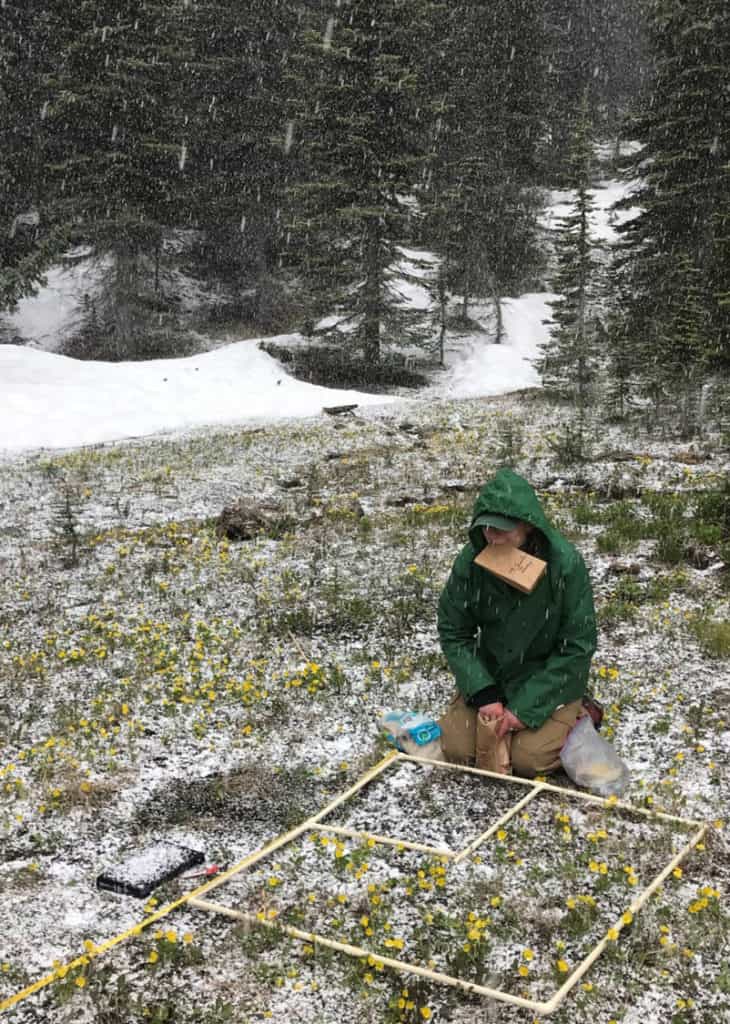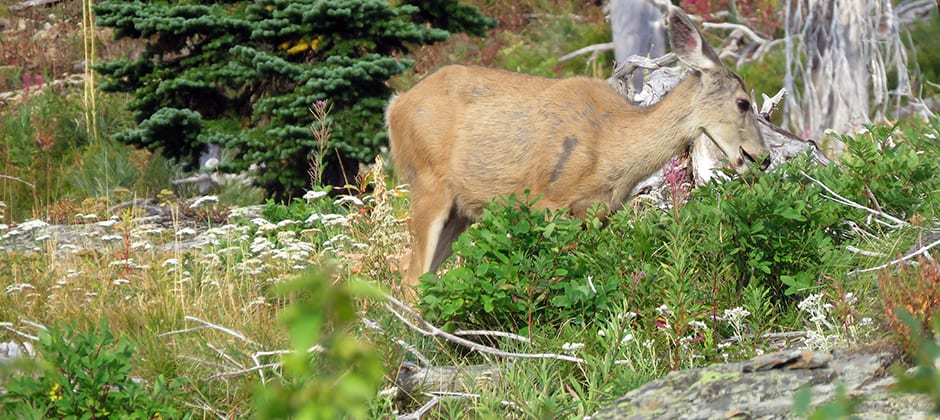Share this article
JWM: For Montana mule deer, is migration worth the effort?
Northwestern Montana is a legendary area for mule deer. Hunters go there to seek out unusually large trophy bucks, which prowl through a more densely forested landscape than mule deer usually prefer.
The deer have adopted different strategies to select foraging areas. Some stay in the same home range all year. Others migrate in search of greener summer forage. But is the journey worth it?
As the human footprint on the region changes, these mule deer—like many species around the world—seem to be seeing less benefit from migration, researchers found.
“Worldwide, we’ve seen migratory behaviors decrease in ungulates,” said Collin Peterson, a wildlife research technician with Montana Fish, Wildlife and Parks. “Either individuals have stopped migrating altogether and are adopting a resident strategy, or populations of migratory ungulates have decreased. This often has to do with the quality of the ranges they’re migrating to.”
Montana wildlife managers became interested in the migration strategy of the region’s mule deer (Odocoileus hemionus) after anecdotal evidence suggested populations were declining. Locals reported seeing fewer of them, and hunter harvests decreased dramatically. But little was known about these deer. Compared to mule deer elsewhere in the West, where they tend to occupy more open forests, herds in northwestern Montana are often found in dense coniferous forests where they’re hard to find and hard to study.
“There was this need to better understand the ecology of mule deer,” said Peterson, who led the study published in the Journal of Wildlife Management as a master’s student at the University of Montana’s Wildlife Cooperative Research Unit. Other research on these mule deer revealed the average female survival rate was about 79%. In a stable population, the rate is about 85%. By understanding how environmental factors influenced their behavior, biologists hoped to get a better sense of what was limiting their population numbers.
The team fit 136 mule deer with GPS collars to find out where the animals roamed. They also collected vegetation data throughout the region—ranging from temperate montane rainforests to short-grass prairies—to understand what forage was available. In addition, they looked at mountain lion (Puma concolor) and gray wolf (Canis lupus) movement data to get a sense of predation risk.

Northwest Montana presents a range of landscapes occupied by mule deer, from the Cabinet Mountains, pictured here, to the prairies of the Rocky Mountain Front. Credit: Collin Peterson
If mule deer are going to expend the energy, the researchers figured, they ought to get some big benefits from migrating—but that’s not what they found. Instead, the results were a mixed bag. Sometimes, resident mule deer had better forage and lower predation risk than those that migrated.
“It brings into question, why are these animals migrating?” Peterson said.
Mule deer tend to be pretty faithful to their strategies, he said. If a female migrates one year, it will probably migrate year after year, going back to the same spot again and again, regardless of the conditions on the ground.
In northwestern Montana, conditions for mule deer have deteriorated, he said, but not as starkly as elsewhere. In neighboring Wyoming, for instance, the growing presence of well pads used in the oil and gas industry has altered landscapes where mule deer forage, leaving less food available to them.
What’s happening in Montana isn’t quite so defined. “We can’t really point to some exact human factor that has caused decreasing quality for summer range in northwestern Montana,” Peterson said.

Mule deer habitat research technician Rachel Hopkins conducts a vegetation survey while snow falls on the summer solstice in the Whitefish Range. Credit: Collin Peterson
But there are some possibilities. On the one hand, a century of fire suppression has reduced the number of wildfires. On the other, logging activity in the region has declined. Mule deer used to benefit from both of these disturbances, which historically cleared out mature trees and made room for young, nutritional vegetation that mule deer prefer.
“Basically, forest disturbance regimes have changed,” Peterson said. Climate change may play a role, too, he said.
Mule deer populations aren’t exactly in trouble in the region, and managers’ options are limited—much of the summer range lies in higher-altitude federally designated wilderness areas. If managers want to boost mule deer numbers to give hunters more opportunities, restoring disturbances through fire or tree clearing could help create conditions to better support them, Peterson said. Or they may want to focus management efforts on mule deer winter range, where they might be more effective.
This article features research that was published in a TWS peer-reviewed journal. Individual online access to all TWS journal articles is a benefit of membership. Join TWS now to read the latest in wildlife research.
Header Image: A mule deer doe browses on shrubs in the Cabinet Mountains of Montana. Credit: Collin Peterson








